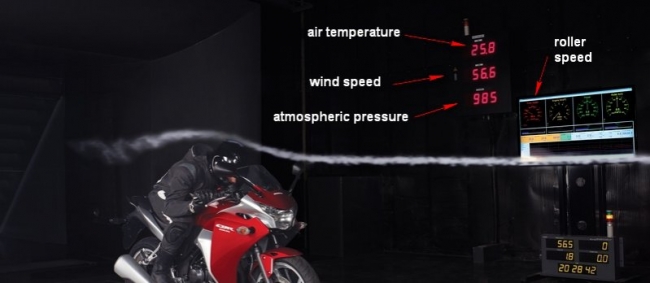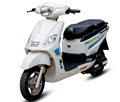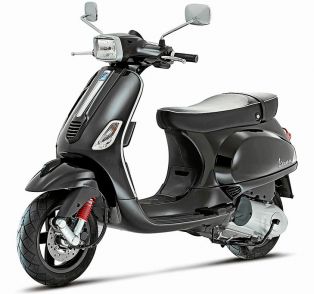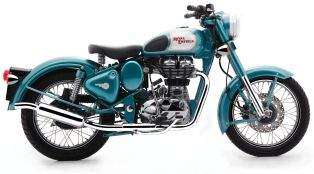 Aerodynamics is one of the most interesting subjects that mankind will ever learn. Everyone will want to own a vehicle that looks streamline and provides good stability at high speeds. Let us leave apart the vehicles. The humming bird that weighs less than 2 grams is so aerodynamic in its shape. When it was put to a test in a wind tunnel, with fake flower carrying sugar syrup that acted like its nectar, the results proved to be amazing. The humming bird was so stable even at very high speeds of the wind. It proved the same even when the wind was mixed with water droplets. The humming bird used its beak as a medium to hold to the bird and moved its body and flapped its wings in the direction of the wind, making it extremely aerodynamically stable. So how does the wind tunnel work to test the aerodynamic efficiency of your motorcycle? Let's find out-
Aerodynamics is one of the most interesting subjects that mankind will ever learn. Everyone will want to own a vehicle that looks streamline and provides good stability at high speeds. Let us leave apart the vehicles. The humming bird that weighs less than 2 grams is so aerodynamic in its shape. When it was put to a test in a wind tunnel, with fake flower carrying sugar syrup that acted like its nectar, the results proved to be amazing. The humming bird was so stable even at very high speeds of the wind. It proved the same even when the wind was mixed with water droplets. The humming bird used its beak as a medium to hold to the bird and moved its body and flapped its wings in the direction of the wind, making it extremely aerodynamically stable. So how does the wind tunnel work to test the aerodynamic efficiency of your motorcycle? Let's find out-Wind tunnel was built more than 100 years ago; even the Wright Brothers used the same to test their first aircraft. Ever since then this technology has been used by automobile manufacturers to improve the handling, stability, down force and various other factors.
RELATED ARTICLE: An In-depth Of Aerodynamics
Modern Wind tunnels deliver a smooth air flow simply because of the five components, the Settling Chamber, Contraction Cone, Tail Section and Drive Section.
Wind Tunnel Settling Chamber-
The Settling Chamber helps to settle the air often through honey comb shaped holes or a mesh. The air is immediately sent into a contraction cone, a constrained space that highly increases the air flow velocity. The best example is covering the mouth of a pipe with the thumb finger, to increase the velocity of flow of the water.
Wind Tunnel Contraction Cone-
The engineers place the models in the test section, which is where the sensors record the data and scientists make visual observations. The air flows into diffuser, which is a conical shaped section that widens and thus smoothly slows the air’s velocity without causing turbulence in the test section.
Wind Tunnel Drive Section-
The Drive section houses the fan that creates high speed air flow. The fan is supported on a concrete wall with springs and dampers, since the power of the fan it too high it might cause a small earth quake if it doesn’t have a base. The fan is always place downstream of the test section rather than the entrance. This setup allows a smooth stream of air to flow.
The Settling Chamber helps to settle the air often through honey comb shaped holes or a mesh. The air is immediately sent into a contraction cone, a constrained space that highly increases the air flow velocity. The best example is covering the mouth of a pipe with the thumb finger, to increase the velocity of flow of the water.
Wind Tunnel Contraction Cone-
The engineers place the models in the test section, which is where the sensors record the data and scientists make visual observations. The air flows into diffuser, which is a conical shaped section that widens and thus smoothly slows the air’s velocity without causing turbulence in the test section.
Wind Tunnel Drive Section-
The Drive section houses the fan that creates high speed air flow. The fan is supported on a concrete wall with springs and dampers, since the power of the fan it too high it might cause a small earth quake if it doesn’t have a base. The fan is always place downstream of the test section rather than the entrance. This setup allows a smooth stream of air to flow.
Most of the wind tunnels are long, straight boxes or an open circuit tunnel. A closed circuit is preferred more, because the air can be sent back in the same path and is easier to maintain the air flow direction. The main advantage of closed circuit is that it is very helpful in conserving energy. The set up is not very expensive to lay out, but it is very expensive to run and maintain. The walls of the wind tunnel are extremely smooth, because any bumps could cause a problem in the velocity of the wind and can cause turbulence. Most of the wind tunnels are moderately sized to fit into the experiment lab.
RELATED ARTICLE: Crouching On Motorcycle And The Wind Chill Factor
Scientists use a path of smoke along with the wind to trace the path of the wind flowing over the vehicle. Sensors are used to measure velocity, air pressure, temperature and many other variables. The speed of the wind can be controlled up to a maximum velocity of 110kmph. Every small component can help in increasing or decreasing the aerodynamics of the vehicle.
Advantages of using a Wind Tunnel-
• To study, cope and drag forces.
• Helps to improve riding position.
• To improve aerodynamic shape.
• To increase the down-force.
• To improve handling and stability.
• A proper aerodynamic shape can help the rider to attain more speed up to 2-3kms.
Tuck in your body, get into the best possible aerodynamic shape and enjoy the ride .• Helps to improve riding position.
• To improve aerodynamic shape.
• To increase the down-force.
• To improve handling and stability.
• A proper aerodynamic shape can help the rider to attain more speed up to 2-3kms.
By: Rishath Suresh











